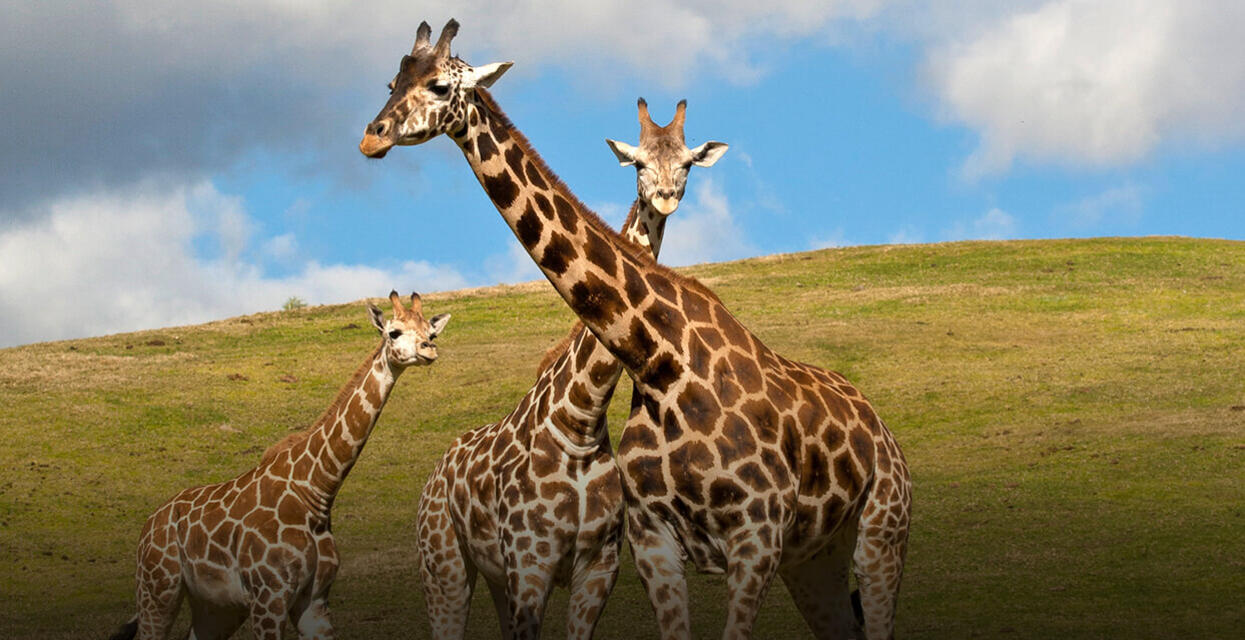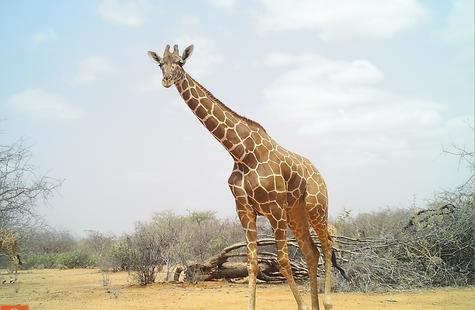Conservation Status: IUCN Red List – Critically Endangered to Least Concern
Threats to Survival: Habitat loss and degradation; climate change; poaching
Reticulated Giraffe Conservation Work
95% of the reticulated giraffe’s range is shared with pastoralists and their livestock. The Twiga Walinzi initiative, a partnership with Giraffe Conservation Foundation and others, is a community-led conservation program that works hand-in-hand with pastoralists. The program’s primary goals are: 1) gathering data on giraffe population numbers, seasonal habitat usage and movement patterns, and interactions with livestock; 2) gathering social science data on co-existence and conflict between giraffe, people, and livestock; 3) increasing giraffe protection through community outreach and education; 4) building in-country capacity around giraffe conservation; and 5) supporting the operations of community conservancies and specialized anti-poaching teams. As part of this work, we co-lead the Twiga Tracker initiative, which aims to attach satellite tracking units on 250 giraffe of all four species. This will allow us to better understand giraffe home ranges, seasonal migrations, habitat preferences, and impacts of human infrastructure.
Key Partnerships
Working with Giraffe Conservation Foundation and local government, we assist in the translocation and reintroduction of giraffe into areas from which they have been extirpated, including Niger and Uganda. In partnership with Giraffe Conservation Foundation and the University of Oxford, we conducted the first-ever trade assessment for giraffe and giraffe parts across Africa. Gathering these baseline data have been key to better understanding the dynamics of this trade and the extent to which it impacts giraffe conservation. In northern Kenya, we are leading a cutting edge social science research initiative to understand the localized trade and consumption of giraffe meat, allowing us to conduct more effective, tailored, demand-reduction campaigns.
Giraffe Genome Sequencing
The Genome10K Project, which has sequenced more than 200 vertebrate genomes, is completing sequencing of the giraffe using tissue samples from our Frozen Zoo®. Information encoded in the genomes of threatened and endangered species revealed by the Genome10K project will be instrumental to conservation efforts, contributing new information on life history, genetic disease and disease risk factors, and population dynamics. This information will significantly increase our understanding of how to sustainably manage reticulated giraffe populations.












